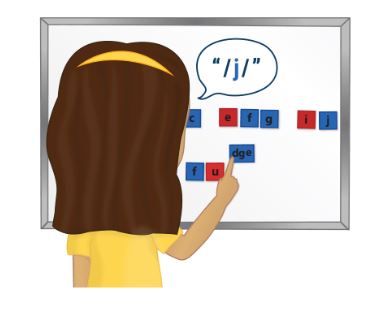Multisensory learning is when a child uses a number of senses to experience a learning activity. This could be seeing, hearing and touching or manipulating letters. We experience the world with our senses and these allow us to absorb and learn new things. Learning in a multisensory way helps children remember what they have learned because they can use a number of channels of information to process this new learning. Multisensory teaching is helpful for all pupils but especially for those who need extra practice and more scaffolding to their learning. This applies to the early stages of reading instuction.
Some educators may confuse multisensory learning as ‘fun learning’. For example – asking children to run around the playground to find letters may be a fun activity and it may entail seeing and hearing and moving around but does it use the learning time well? How much of this activity is spent on learning to identify letters and their sounds? How much time is spent having fun running around? As educators we need to think carefully about what we would like our children to learn and how an activity facilitates this learning. While we want our pupils to enjoy learning, we must use the limited time we have in the school day effectively.
I recently made this video showing how one can teach children to read and spell the word ‘fish’. I used some playdough for this. To clarify the purpose for this multisensory activity, I have asked some questions and answered them.
- What am I trying to teach? I am trying to teach my pupil to read and spell the word ‘fish’. This entails segmenting sounds, blending sounds and writing letters to represent those sounds.
- How will I teach this? First the pupil reads the words and presses the play dough as he/she reads. He/she uses two fingers as the sound /sh/ is pronounced.
- Then the pupil writes the word saying the sound.
- What is multisensory in this activity? The child can see the letters, say and hear the sounds and press the playdough as he/she segments the sounds, and write the sounds.
- Why am I using the playdough? To help the child segment all the sounds and also to see that the sounds /f/ and /i/ are spelled by one letter but the sound /sh/ is spelled by two letters.
#teachphonics #readingintervention #readingtutor



How would you teach the long e sound (e.g. cake, lice, joke)?
That is a good question. I will have a think and make another video to demonstrate how to teach a split digraph.
Hi Tami
Can I take a screenshot of the play dough to add to DPiL Guidance for encoding -this is great. I will credit you under the photo?
Yes, please do. We would be happy for you to use this in your guidance.
Kind regards, the Phonic Books team.